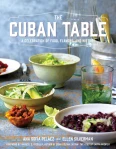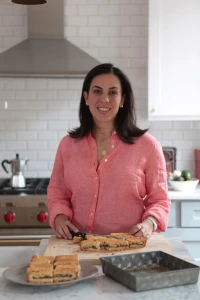In a Manhattan Kitchen, Part 2
As promised, I’m posting the results of our market run through Chinatown. When it was all laid out, I have to admit I was intimidated. I knew absolutely nothing about Filipino foods. A combination of Spanish, Mexican, Malaysian, Chinese and Indian, I had never seen many of the ingredients before and their names wouldn’t stop moving long enough to be written down so I’ve included a lot of pictures. With Benjie’s help, Annette explained the origins of what we would be making. Then it all started going at once…



Steven prepped the vegetables for the mixed fish kilawin/kinilaw, a ceviche made from golden pompano mixed up by Haley. The fish sinigang, a tamarind flavored soup, was inspired by the soup Annette had when she first visited the Philippines. We almost didn’t have time, but Haley managed a final push to include it.



The chicken and pork ribs for the adobo had been marinating in a combination of garlic, peppercorns, bay leaves, vinegars and soy seasonings including Toyomansi with calamansi. It was all set to a low simmer until cooked through. Steven and I were given the task of browning the pieces and returning them to the pot. He finished his half without any drama. I added too much oil to my pan so had to duck for cover whenever I set a new piece popping.



When we made our way back to the kitchen, we were met with the fantastic aroma of the pig trotters for the crispy pata that Annette had left simmering in bay leaves, garlic, onion, apple cider vinegar, soy sauce and most importantly, rum. It was then heated in the oven, and finally deep fried so the outside crisps but the inside stays juicy and tender.


There was also “Bangus” style trout marinated then fried.


Annette added the sauce from the crispy pata to the the water spinach adobong then some bagoong alamang (fermented shrimp paste) to taste.

Raque put together the base for the ube ice cream. Over shaved ice and topped with boiled sweet beans and fruit, it becomes halo-halo. I could have this every day.



Annette worked on the rice flour (“Mochiko”) dough for the Palitaw, glutinous rice cakes. After forming the dough into patties, they were boiled and cooled in an ice bath. Raqui coated them in sugar, sesame seeds, and shredded coconut. The recipe is posted on Annette’s blog along with the complete menu.



Julia and Benjie moved the banana leaves slowly across the open flame to deepen the flavor when they used them to line that pan for the cassava bibinka, a cake made of yucca, coconut, and gouda (though manchego was substituted). The cake is baked then topped with brown sugar and coconut milk and put under a broiler. It was impossible to get a picture of Benjie not in motion.



I had no idea how it was all going to happen but it did!

By the time we stopped to eat, the stores, stories and flavors had been brought into a deeper focus. It has the brightness of Southeast Asian ingredients with the heartiness of Spanish food, and I can’t wait to try more. Steven asked in his blog why there weren’t more Filipino restaurants in the US, which I hope will change soon. Until then, I am grateful to the Filipino ladies who set their conditions and to Annette for keeping her promise.







Trackbacks & Pingbacks